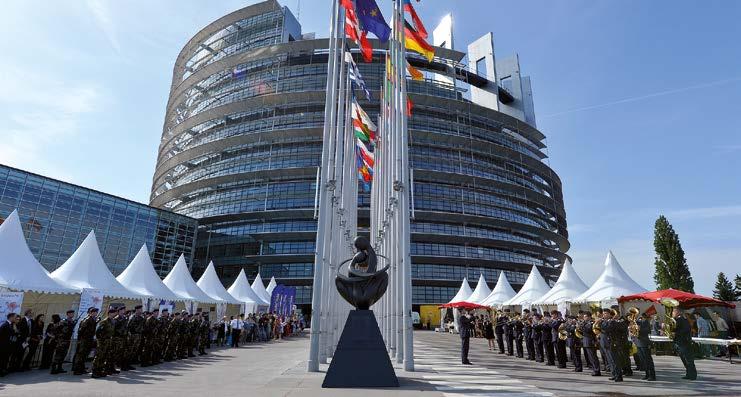Prospective roles for the EDA in the Common Security and Defence Policy Peace comes at a price, and demands investments
by Dr David W. Versailles and Dr Valérie Mérindol, newPIC chair, Paris School of Business, Paris
T
he necessity to invest in defence and security capabilities has never been as strong since the end of the Cold War. Real threats loom over Europe. China and Russia have caught up with capabilities from their previous technological backwardness. The former did not wait long before it mentioned its new military power to advance its points in international trade negotiations. The European Defence Agency (EDA) was established in 2004. Its legal basis has already been adapted twice, in 2011 and 2015, to accommodate evolutions in intergovernmental cooperation. Prospects for the EDA’s future build on progress made over the last 15 years. 2016 and 2017 have, however, marked a breakthrough with the European Commission (EC) and the European Parliament (EP) taking new steps in regards to their role in Defence and Security Research, Development, Tests and Evaluation (RDTE) funding and programming. This new governance scheme adds to the complexity. In this article, we first explain the context and then address two points: the importance of building the EDA’s in-house competencies, and the necessity to articulate RDTE in a dual-use framework.
Taboo issues Discussions regarding the EDA’s future most often forget the elephants in the room: the interaction with NATO and the prerogatives assigned to the different European institutions in
56
defence and security domains. Debates around the European Security and Defence Policy (CSDP) come up in relation to concrete issues on the elaboration of the European Defence Technological and Industrial Base (EDTIB), the pinkest of all elephants. Any institutional or political development of the CSDP reveals, sooner or later, some hidden agenda. No technology is neutral The development of defence and security operational capacities requires decisions at the crossroads of technological, economic, budget-related, and doctrinal issues. No technology is ever “neutral”. It implies a doctrine for the employment of force that makes it possible for politicians to operate missions that are potentially acceptable to public opinions. Citizens in European countries don’t accept similar defence objectives or similar tax levels to install forces and equipment. Peace demands investments 2017 marks a specific cornerstone. The European Defence Fund (EDF) was launched in June 2017 under the strong influence of the European Parliament. In the same month, the European Commission guidance was expanded into a “Reflection paper” where they described options for convergence levels and mutualisation opportunities. In parallel, the USA’s constraints on public finance and reorientation of strategic priorities towards the Pacific area lead to an evolution within NATO. Numerous countries have behaved for decades as if their adhesion to NATO made it possible to avoid public spending on defence
photo: © European Union, 2017; Source: EC-Audiovisual Service, Photo: Mauro Bottaro
THE EUROPEAN – SECURITY AND DEFENCE UNION

















